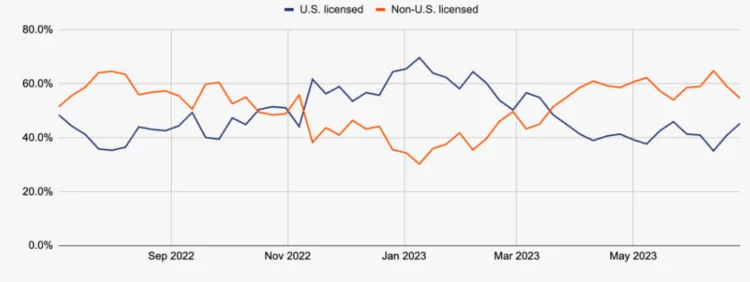A new report from blockchain research firm Chainalysis suggests that the US government may lose regulatory supervision of the stablecoin market as activities have increasingly occurred through entities that aren’t licensed in the United States.

In its most recent report on cryptocurrencies in North America, published on October 23, Chainalysis noted that non-U.S.-licensed entities have been increasingly involved in stablecoin transactions.
Since spring 2023, the majority of stablecoin inflows to the 50 largest cryptocurrency services have shifted from U.S.-licensed services to non-U.S.-licensed services, according to the findings of Chainalysis.
According to the report, as of June 2023, approximately 55% of stablecoin inflows to the top 50 services flowed to non-U.S.-licensed exchanges.

The study indicated that the U.S. government is losing its ability to supervise the stablecoin market, while U.S. consumers still need opportunities to engage with regulated stablecoins.
“Although U.S. entities initially helped legitimize and seed the stablecoin market, more crypto users are engaging in stablecoin-related activity with foreign-based trading platforms and issuers,” wrote Chainalysis.
According to the company, U.S. lawmakers have yet to enact stablecoin regulations. Congress is still debating proposals such as the Clarity for Payment Stablecoins Act and the Responsible Financial Innovation Act.
Despite declining licensed stablecoin activity in the United States, North America has emerged as the most prominent cryptocurrency market, receiving an estimated $1.2 trillion from July 2022 to June 2023.
According to Chainalysis, the region accounted for 24.4% of global transaction volume, surpassing Central, Northern, and Western Europe, which received an estimated $1 tr
